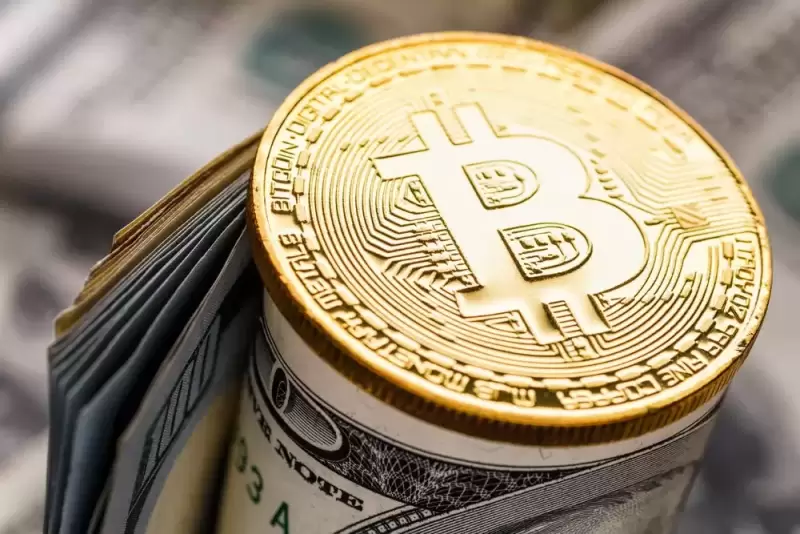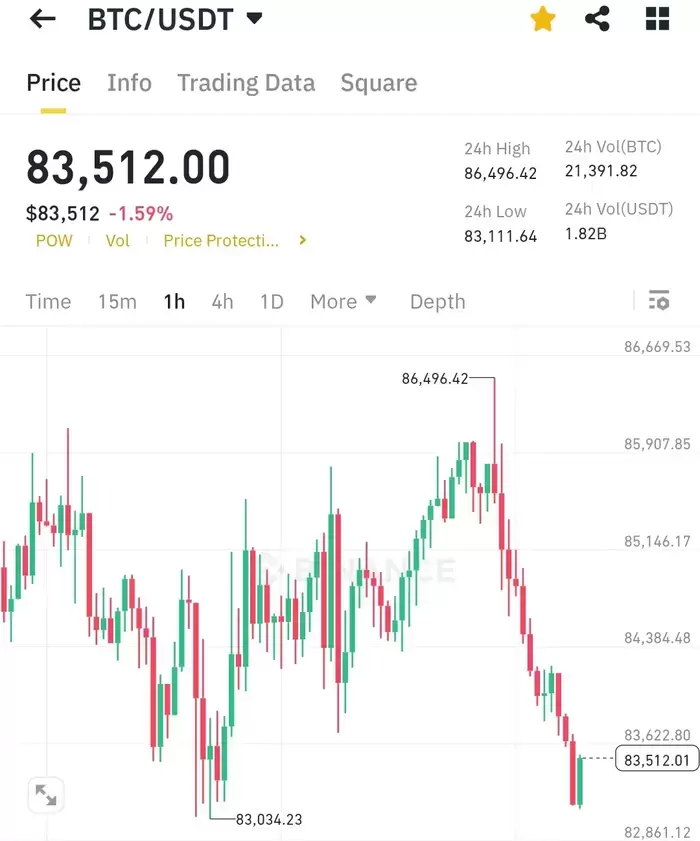 |
|
 |
|
 |
|
 |
|
 |
|
 |
|
 |
|
 |
|
 |
|
 |
|
 |
|
 |
|
 |
|
 |
|
 |
|
Cryptocurrency News Articles
Ripple's XRP Has Garnered Attention as a Potential Disruptor to the Established Global Financial System
Apr 16, 2025 at 02:00 am
Ripple's goal is to leverage XRP's unique features to address the inefficiencies present in SWIFT's legacy system, creating a more streamlined and cost-effective solution

In the rapidly evolving world of cryptocurrency, Ripple’s XRP has emerged as a subject of interest for its potential to disrupt established financial systems, particularly in the domain of cross-border payments.
In the rapidly evolving world of cryptocurrency, Ripple’s XRP has emerged as a subject of interest for its potential to disrupt established financial systems, particularly in the domain of cross-border payments.
Presented as a faster and more cost-efficient alternative to SWIFT, the cryptocurrency could be used to streamline transactions between financial institutions.
SWIFT, an acronym for the Society for Worldwide Interbank Financial Telecommunication, serves as the communication network through which over 11,000 financial institutions in over 200 countries exchange financial messages. It processes transactions worth over $5 trillion daily, contributing to an annual volume of approximately $1.25 quadrillion.
SWIFT, an acronym for the Society for Worldwide Interbank Financial Telecommunication, serves as the communication network through which over 11,000 financial institutions in over 200 countries exchange financial messages. It processes transactions worth over $5 trillion daily, contributing to an annual volume of approximately $1.25 quadrillion.
While SWIFT’s infrastructure has been foundational to the global financial system, its reliance on a network of correspondent banks often results in delays, high transaction fees, and a lack of real-time settlement.
In contrast, Ripple offers an alternative through its On-Demand Liquidity (ODL) service, which utilizes XRP as a bridge currency for real-time transactions. RippleNet, Ripple’s payment network, allows for cross-border payments to be settled almost instantly, bypassing the traditional multi-day settlement process employed by SWIFT. By eliminating intermediaries, Ripple aims to offer a more efficient and affordable solution to financial institutions, particularly in emerging markets where access to traditional banking systems is limited.
Some industry observers, including DigitalG, a former London-based fund manager and XRP advocate, have suggested that XRP could replace SWIFT entirely, leading to a significant increase in its value.
DigitalG has argued that the asset could exceed $15,000 per token if it were to completely overtake SWIFT’s market share, citing the fact that XRP can be subdivided into smaller units known as “drops,” enabling higher valuations. The scale of this potential shift in the global payments landscape has led to increased speculation on the asset’s future price.
Key Challenges
Key Challenges
However, several critical factors must be considered before XRP can realistically replace SWIFT. One key concern is the scalability of Ripple’s infrastructure. SWIFT processes an enormous volume of transactions each day, and for XRP to fully compete, the XRP Ledger must be capable of handling a similar scale of transactions without compromising reliability.
However, several critical factors must be considered before XRP can realistically replace SWIFT. One key concern is the scalability of Ripple’s infrastructure. SWIFT processes an enormous volume of transactions each day, and for XRP to fully compete, the XRP Ledger must be capable of handling a similar scale of transactions without compromising reliability.
Although the XRP Ledger has demonstrated rapid settlement times and efficiency, further advancements in infrastructure and liquidity management are necessary to meet the demands of the global financial system.
Additionally, regulatory uncertainty remains a significant hurdle for Ripple and XRP. The company has been engaged in an ongoing legal battle with the U.S. Securities and Exchange Commission (SEC) over the classification of the token. This legal uncertainty has created challenges in terms of institutional adoption, as many investors and financial institutions require regulatory clarity before committing to new technologies. A favorable resolution in Ripple’s legal proceedings could bolster confidence in XRP, making it a more attractive option for adoption by financial institutions worldwide.
Industry Support for Token’s Potential
Despite these obstacles, Ripple has received significant support from various stakeholders in the financial industry. In 2024, global investment bank Houlihan Lokey recognized Ripple as one of SWIFT’s key competitors, highlighting the advantages of Ripple’s ODL service.
Despite these obstacles, Ripple has received significant support from various stakeholders in the financial industry. In 2024, global investment bank Houlihan Lokey recognized Ripple as one of SWIFT’s key competitors, highlighting the advantages of Ripple’s ODL service.
Moreover, prominent figures such as Mark Yusko, CEO of Morgan Creek Capital Management, have expressed interest in supporting XRP’s growth if it can achieve mainstream adoption.
While the idea of XRP replacing SWIFT is largely speculative at this stage, the cryptocurrency’s unique design and operational advantages position it as a promising alternative in the global payments landscape.
While the idea of XRP replacing SWIFT is largely speculative at this stage, the cryptocurrency’s unique design and operational advantages position it as a promising alternative in the global payments landscape.
However, for XRP to fully realize its potential, key challenges related to scalability, infrastructure, and regulatory uncertainty must be addressed. If these challenges are overcome, XRP could emerge as a powerful competitor to SWIFT, ushering in a new era of faster, more efficient, and more cost-effective cross-border payments.
Disclaimer:info@kdj.com
The information provided is not trading advice. kdj.com does not assume any responsibility for any investments made based on the information provided in this article. Cryptocurrencies are highly volatile and it is highly recommended that you invest with caution after thorough research!
If you believe that the content used on this website infringes your copyright, please contact us immediately (info@kdj.com) and we will delete it promptly.
-

-

- Bitcoin (BTC) Faces a Critical Test as Global Markets Remain Volatile and Macroeconomic Tensions Escalate
- Apr 16, 2025 at 01:15 pm
- Bitcoin is facing a critical test as global markets remain volatile and macroeconomic tensions escalate. After weeks of price swings and uncertainty, BTC is trading above the $85,000 level — a psychological and technical threshold that bulls have managed to defend.
-

- Bitcoin (BTC) has been moving between $80,00 and $85,00 for the fourth day as the uncertain market for the U.S.-China trade dispute continues.
- Apr 16, 2025 at 01:10 pm
- In the meantime, most of the world's transactions are from de facto kimchi coins from Korean exchanges. All of the top coins in the upbit growth rate over the past week were also taken up by coins with a high share of Korean transactions.
-

- MicroStrategy (Formerly ) Doubles Down on BTC After a Performance in Q1 2025
- Apr 16, 2025 at 01:10 pm
- Bitcoin price consolidates above $83,500 on Tuesday as MicroStrategy doubles down on BTC after a lull performance in Q1 2025. With institutional confidence as analysts forecast a parabolic BTC rally toward $90,000.
-

-

- Semler Scientific Files to Issue $500M in Securities Following $30M DOJ Settlement
- Apr 16, 2025 at 01:05 pm
- Semler Scientific has filed with the U.S. Securities and Exchange Commission (SEC) to issue $500 million in securities. This move follows the company’s announcement of a $30 million settlement with the Department of Justice (DOJ).
-

-

-



























































